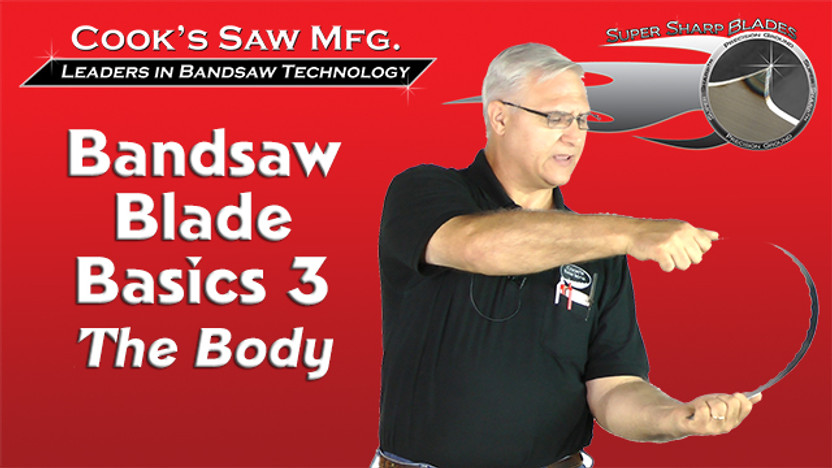Sawmill Bandsaw Blade Basics 3 - The Body
Posted by Admin on Oct 12th 2023
Hello again I'm Steven Cook with Cook Saw Manufacturing. We've been doing some sawmill bandsaw blade basics dealing with resaws and sawmills. Especially in the larger wood and cutting of logs and big cants for pallet sawmills.
In this video I'm going to talk about specifically just the body of the blade or really what the bandsaw blade is made off and some things that are interesting at about it and things that people would like to know.
To begin with this metal is made of spring steel. That allows the blade body to spring back and forth as it is going around a band wheel and not stress fracture.
This material is not exactly the same as a standard mild spring steel as our sawmill blades contain a high carbon content. This higher carbon content allows us to heat treat not only the body of the blade but the tooth and it still retain the necessary amount of spring to allow stretch and retraction during the cutting process.
Much of what we do here at Cooks Saw when manufacturing sawmills blades is proprietary as the amount of carbon and the processes for heating the body and tooth varies from manufacturer to manufacturer.
Another very important aspect to the sawmill blade body that my brother Tim Cook has taught many people is as this spring still curves around the wheel it actually develops what's called anti clastic curvature. So, when the blade is wrapped around the band wheel you can take something like a razor blade and lay it up against the outside of the blade and see that instead of it having a ‘hump’ as you might expect, it actually has a ‘cup’ or ‘dip’ in the blade (anti-clastic curvature). We didn't make that name up by the way we found this in some literature from many years ago.
So ultimately what happen when the blade, moving at speeds of roughly 5,500 feet per minute, are going around the band wheels is that they develop a slight curvature in them even though they are spring steel.
This curvature becomes more pronounced the wider the blade you are running on your sawmill and after time no matter how much you sharpen and set the blade you might not be able to get it to saw straight.
However, having a roller guide system helps with this as they help guide the blade from the top side as they can be tilted and adjusted to compensate for blade body changes. Also, we have a machine we have built that we can use to flatten your blade back out for you when you send your blade in to be sharpened you can request this process and get longer life out of your blades.
In the next video we’ll discuss different blade thicknesses.

